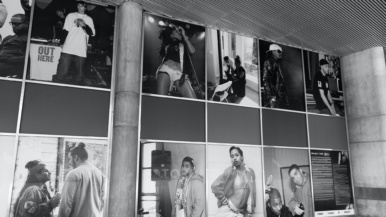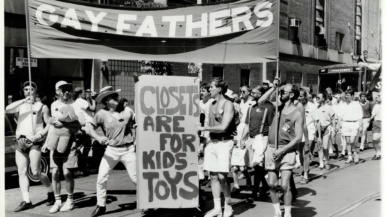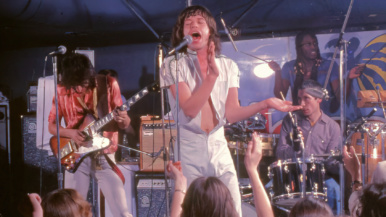Eight amazing photos that reveal what it was like to be an immigrant in 1900s Toronto

For decades, St. John’s Ward was the first destination for many new Torontonians. Better known as the Ward, the dense neighbourhood squished between University, Yonge, College and Queen was a place where cultural divides broke down and people from opposite ends of the world lived next to each other in quarters that were both cramped and cozy, impoverished but vibrant.
The Ward was, at various points, home to a large Italian population and a sprawling Chinatown. It was the neighbourhood of Thornton and Lucie Blackburn, the couple who escaped slavery and started Toronto’s first cab company, and of Edward Pasquale, the Italian immigrant who founded Unico. It residents and their ancestors lived through the Irish Potato Famine, arrived via the Underground Railroad and could tell stories of the plight of Jewish families fleeing Europe.
Over the years, the Ward’s immigrant community dispersed as the area’s streets became home to shops, government buildings and, eventually, city hall and Nathan Phillips Square. But an online exhibition called Block by Block, viewable now on the Toronto Ward Museum’s website, breathes life back into the neighbourhood, revisiting its history and residents through photography. Here, the stories behind some of its most striking images.

Bay and Dundas • 1910
This photo looks north from the old T. Eaton factory and shows the intersection of Terauley and Agnes—or, as Torontonians know it today, Bay and Dundas. By the time this photo was taken, the Agnes Street Methodist Church had become a Yiddish theatre called the Lyric. Now, it’s the site of the Atrium shopping centre.

Jamaican wedding • 1926
This picture shows the wedding of Joshua Michael Williams, a merchant and importer of Jamaican coffee, and Rachel Adina Stephenson at the British Methodist Episcopal Church, a gathering spot for many in the black community. The Globe covered the wedding, calling it “one of the most elaborate weddings that have taken place among members of the local Jamaican colony.” The couple celebrated their reception on Queen Street West and honeymooned in Niagara Falls. The best man, on the left, is John Carter; his son, George, went to public school in the Ward, went on the study law at Osgoode Hall and became one of the nation’s first black lawyers and the first Canadian-born black judge.

Mount Carmel Church baseball team • 1942
The Mount Carmel Church, on St. Patrick Street, wasn’t just a place for Sunday mass; it was a social centre where people from many communities rubbed shoulders. Initially, the church was an Irish stronghold. In later years, that switched to Italian. The members of its baseball team were a tight-knit group who attended each other’s weddings and served as the godparents of each others’ children.

Boys on tricycles • 1940s
People thought of the Ward as a slum, but shots like this tell another story. Local dentist and amateur photographer John Ackerman shot hundreds of everyday moments in the Ward; his snaps are now stored in the Ontario Jewish Archives collection. A few seconds after he froze this moment in time, the boys got up and posed with babies in a carriage in front of the Ackerman family grocery store.

Ackerman family • 1940s
Ackerman also photographed members of his family—Abbie and Sonya Nable, and Sonya and Albert Ackerman—in front of the Ackermans’ shop. The heads of the Ackerman family, Jacob and Mindel, lived with their four children above their grocery store. As the Ward dismantled, families in this Toronto corridor dispersed to many pockets throughout the city. Many of the neighbourhood’s Jewish families went to Kensington Market, though John lived nearby all his life.

City Hall • 1965
This photo captures the opening of the new city hall in September 1965. The building helped enshrine an image of Toronto as a modern metropolis, but it also displaced many residents of the Ward. The city has since erected plaques that acknowledge the ousting of Ward citizens.

Save Chinatown movement • Late 1960s
To make room for Nathan Phillips Square, two-thirds of Toronto’s original Chinatown was demolished, and many of the displaced businesses never reopened. Press clippings from the time made it seem that the Chinese community was fine with the changes, but that wasn’t entirely true. Activist Jean Lumb, show in this shot with a bullhorn, became the face of the “Save Chinatown” movement, which tried to preserve what was left of the neighbourhood. She also led efforts to change anti-Chinese immigration laws that stopped families from reuniting in Canada. She was the first Chinese-Canadian woman to be awarded the Order of Canada.

Contrast newspaper • 1985
An issue of Contrast from November 1985 highlights the victory of Beverley Salmon, the first woman of colour to be elected an alderman in the municipality of Toronto. Salmon became a well-respected authority in anti-racism activism and continues her work today, tackling racial profiling and police brutality. She received the Order of Ontario this year.





